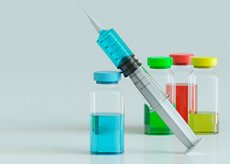New publications
World's first serum for toxic shock syndrome unveiled
Last reviewed: 02.07.2025

All iLive content is medically reviewed or fact checked to ensure as much factual accuracy as possible.
We have strict sourcing guidelines and only link to reputable media sites, academic research institutions and, whenever possible, medically peer reviewed studies. Note that the numbers in parentheses ([1], [2], etc.) are clickable links to these studies.
If you feel that any of our content is inaccurate, out-of-date, or otherwise questionable, please select it and press Ctrl + Enter.

A serious disease called toxic shock syndrome is most often caused by the influence of bacterial toxins on the body. This is a dangerous multi-organ damage caused by exotoxins of Staphylococcus aureus or pyogenic streptococcus.
The syndrome is not often diagnosed, but the degree of its danger makes doctors increasingly think about methods of its prevention.
Scientists from Australia have developed the only specific serum in the world that prevents the development of toxic shock syndrome. As described on the pages of Science Daily, the drug was successfully tested in the first stage of clinical trials. Toxic shock syndrome
became known about forty years ago. The pathological condition was more often detected in women who used vaginal tampons during their monthly bleeding. The basic signs of the syndrome were similar to those of sepsis: deterioration increased rapidly, and the pathology often ended in death.
Preventing the development of the syndrome is an important task that specialists have paid attention to. Now the problem can be solved by a serum developed by employees of the Medical University of Vienna, with financial support from Biomedizinische Forschungsgesellscaft mbH. The basis of the serum was a substance isolated from detoxified staphylococcal toxin. Vaccination is carried out subcutaneously, like most vaccinations.
The first stage of clinical testing was successful: almost five dozen young people (both women and men) experienced the effects of the drug. It was traced: after the injection of the serum, the participants' bodies synthesized antibodies aimed against microorganisms that cause toxic shock syndrome. To check the concentration of antibodies, specialists used a standard blood test.
The results of the first wave of testing allowed them to prove that the serum has the necessary effect without causing any negative side effects.
Today, specialists have already initiated the second stage of clinical testing. Presumably, many more volunteers of different ages will now participate in the tests.
Toxic shock syndrome attracted the attention of scientists in 1980, when an unmotivated increase in the incidence of the pathology, which was usually diagnosed in patients with extensive burns, was noticed. The figures reflecting the statistics were disappointing: out of eight hundred affected patients, 38 people died. The reason for this phenomenon was soon discovered: all the sick women used vaginal tampons. With prolonged use, pathogenic microorganisms, staphylococci, accumulated in hygiene products, which caused the development of toxic shock syndrome.
Details can be found in the periodical The Lancet Infectious Diseases, or on the page http://www.thelancet.com/journals/laninf/article/PIIS1473-3099(16)30115-3/fulltext
